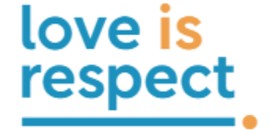|
EDUCATION about and PREVENTION against gender and relationship violence
|
|
Be an Active Bystander
Checklist for Bystander Action from the Know Your Power campaign.
Before Action:
During the Situation
Decision to Act
Men Can Stop Rape: Six Steps for Bystander Intervention
Step One: Notice Events. Social norms often reinforce the normality of sexism and sexual assault so that they escape notice. Therefore, the first step is to notice when someone is crossing a line.
Step Two: Identify Events as Problems. If we understand the potential impact that a sexual assault can have on a survivor and the survivor’s friends, family, and co-workers, we will see someone crossing the line as a problem requiring action.
Step Three: Feel Motivated to and Capable of Finding a Solution. Many times men feel stuck in situations where they might intervene. Providing them with frameworks like primary prevention, dominant/counter stories of masculinity, and bystander intervention can motivate them to become unstuck.
Step Four: Acquire Skills for Action. This key step underlines the necessity in helping men to develop strategies leading to effective action. MCSR works with men to develop an intervention toolkit.
Step Five: Act. The first four steps are very important, but they only have an effect if an emphasis is placed on action. Men need to remember and use the strategies in the toolkit.
Step Six: Evaluate and Revise. After having intervened, men should consider what worked well, what did not, and what they might do differently the next time an opportunity arises.
Check out these other Bystander Intervention Campaigns and Programs
Know Your Power Campaign
Step Up! Sexual Assault and Bystander Intervention
GreenDot
Where Do You Stand Campaign from Men Can Stop Rape
Hollaback Campaign
The Red Flag Campaign
See more campaigns listed on the National Sexual Violence Resource Center page.
Before Action:
- Are you aware there is a problem or risky situation?
- Do I recognize someone needs help?
- Do I see others and myself as part of the solutions?
During the Situation
- How can you keep yourself safe?
- What are your options?
- Are there others you can call on for help?
- What are the benefits/costs for taking action?
Decision to Act
- When should you act?
Men Can Stop Rape: Six Steps for Bystander Intervention
Step One: Notice Events. Social norms often reinforce the normality of sexism and sexual assault so that they escape notice. Therefore, the first step is to notice when someone is crossing a line.
Step Two: Identify Events as Problems. If we understand the potential impact that a sexual assault can have on a survivor and the survivor’s friends, family, and co-workers, we will see someone crossing the line as a problem requiring action.
Step Three: Feel Motivated to and Capable of Finding a Solution. Many times men feel stuck in situations where they might intervene. Providing them with frameworks like primary prevention, dominant/counter stories of masculinity, and bystander intervention can motivate them to become unstuck.
Step Four: Acquire Skills for Action. This key step underlines the necessity in helping men to develop strategies leading to effective action. MCSR works with men to develop an intervention toolkit.
Step Five: Act. The first four steps are very important, but they only have an effect if an emphasis is placed on action. Men need to remember and use the strategies in the toolkit.
Step Six: Evaluate and Revise. After having intervened, men should consider what worked well, what did not, and what they might do differently the next time an opportunity arises.
Check out these other Bystander Intervention Campaigns and Programs
Know Your Power Campaign
Step Up! Sexual Assault and Bystander Intervention
GreenDot
Where Do You Stand Campaign from Men Can Stop Rape
Hollaback Campaign
The Red Flag Campaign
See more campaigns listed on the National Sexual Violence Resource Center page.









